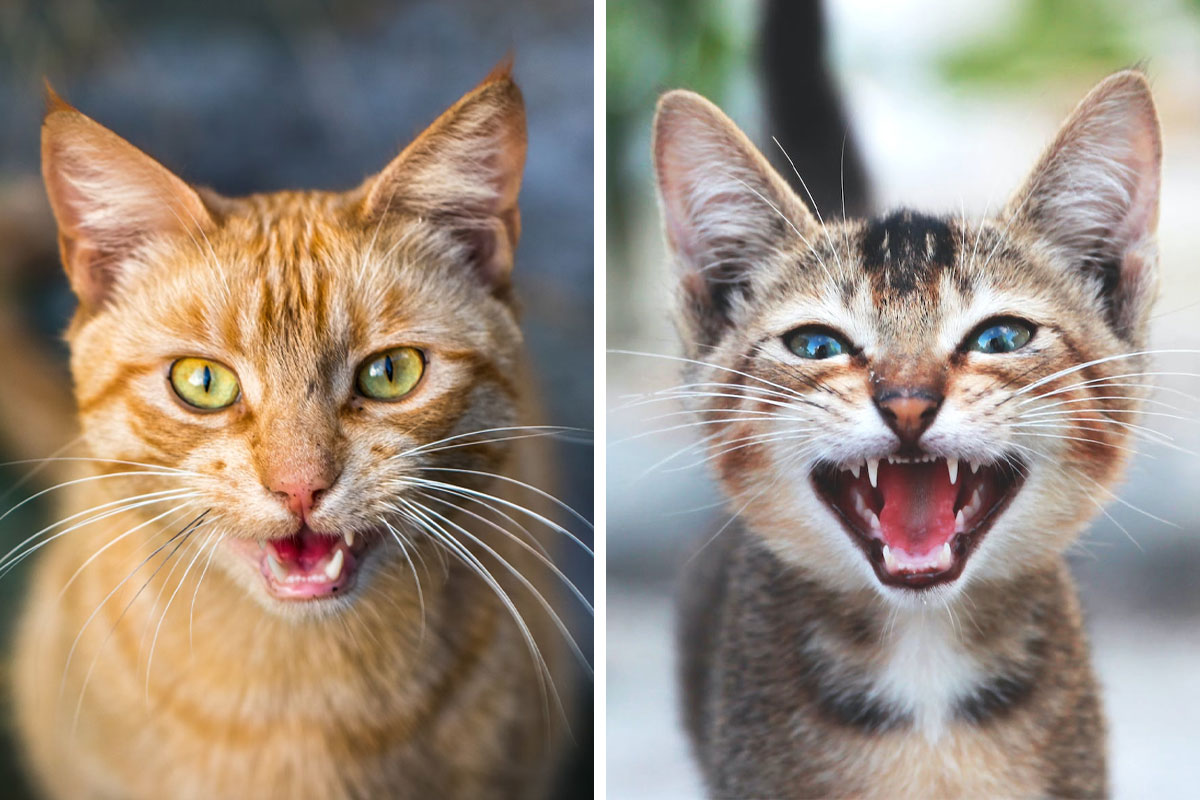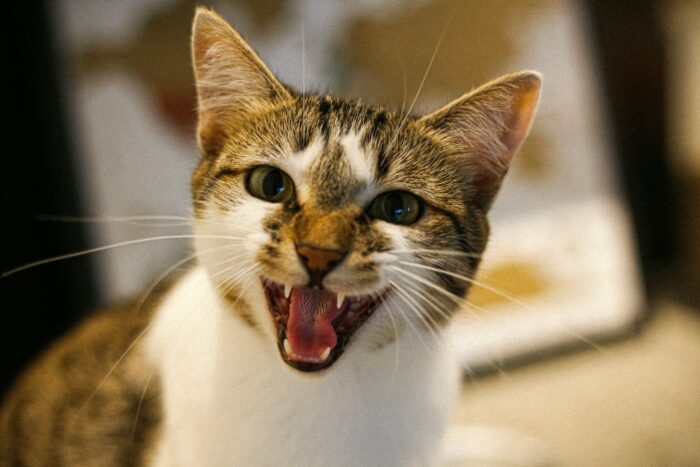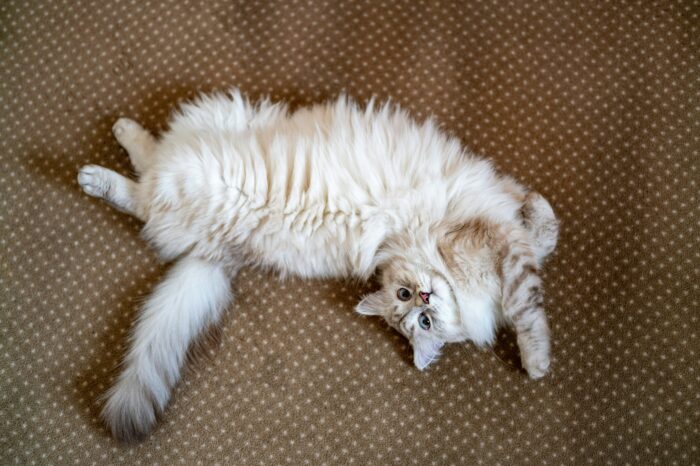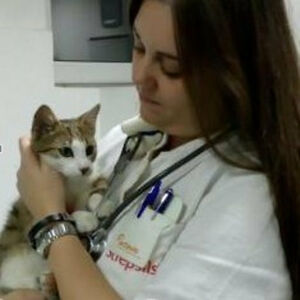
Why Do Female Cats Scream When Mating: Exploring Feline Behavior
Cats, those enigmatic feline companions, are renowned for their mystifying behaviors, and one phenomenon that frequently leaves pet owners puzzled is the clamor that ensues during the mating ritual.
It’s not merely a commotion; it’s a complete chorus of vocalizations that can be genuinely perplexing. Yet, beyond the intrigue surrounding these vocal expressions, there’s a wealth of insight into why cats exhibit such behavior when mating.
- The feline breeding season spans from February to October, with behaviors like increased vocalizations.
- Male cats showcase competitive behaviors during the heat cycle, motivated by the impulse to secure mating opportunities.
- Female cats' post-mating behaviors include rolling, which aids in scent dissemination and signals readiness to mate again.
- Understanding and accepting cats' natural mating behaviors contributes to their well-being and our connection with them.
In this exploration, we’re delving into the rationale behind why cats emit distinctive screams when entering the frisky realms of mating. We’ll dissect the common queries that often leave people scratching their heads about this noisy spectacle, providing you with down-to-earth perspectives on the realm of feline reproduction.
The information provided herein is for informational purposes only. Please refer to our disclaimer for more details..
Understanding Feline Cat Mating Behavior
Overview of the Feline Breeding and Mating Season
During the feline breeding season, which typically spans from February to October, cats experience changes in reproductive behaviors.
Female cats may enter the heat cycle, marked by increased vocalizations or screams, indicating they are ready to mate. Male cats may respond with competitive behaviors, including territorial marking and confrontations.
Image credits: Marlon Soares
The heat cycle involves ovulation, and cats may scream during mating, potentially experiencing pain. Spaying and neutering are standard practices to control breeding.
It’s crucial for cat owners to understand mating behaviors, address the needs of cats in heat, and consider responsible measures like spaying and neutering to manage the feline population.
Signs of a Female Cat in Heat and the Initiation of Mating Calls
When a female cat is in the throes of her heat cycle, a symphony of behaviors unfolds, signaling her readiness to mate. This period, known as the heat cycle, involves distinct signs such as restlessness, increased vocalizations, and specific body postures, including lordosis, revealing that the cat is in heat.
During this phase, female cats may scream, a vocal expression that signifies their readiness and initiates mating.
The heat cycle is intricately tied to the female cat’s reproductive system, marked by ovulation and hormonal changes. It’s the time when the female is most interested in mating, and her cries, or mating calls, attract potential male suitors.
The female cat’s behavior, such as rolling after mating, is part of the mating process and hormonal adjustments. Understanding these signs, particularly during the heat cycle, is crucial for cat owners.
While spaying and neutering can prevent unwanted pregnancies, recognizing and respecting the natural mating behaviors of cats contributes to their well-being and a harmonious coexistence between cats and their owners.
Why Male Cats Respond to Competitive Behaviors During Heat Cycle
In the intricate dance of cat courtship, male cats respond with competitive behaviors driven by their evolutionary instincts and the cyclical rhythms of the cat’s reproductive calendar. When a female cat is in heat, her unmistakable calls, signaling readiness to mate, prompt males in the vicinity to engage in heightened competitiveness.
This competition can escalate into aggressive behaviors, such as territorial disputes and confrontations between males, creating a dynamic backdrop to the mating ritual.
The male cat’s response is influenced by the imperative to secure the opportunity to mate and ensure the continuation of his genetic lineage. This competitive dynamic adds an additional layer of complexity to the overall commotion surrounding cats mating, underlining the primal instincts at play during this crucial phase in the species’ survival.
Courtship Rituals and Interactions
In the captivating realm of feline courtship, the “why do cats scream” question finds its answer in the courtship and mating process, marked by specific body movements, vocalizations, and scent-marking behaviors.
During this entirely natural response to mating, the female cat’s screams serve as both a signal of her readiness and an invitation for potential male suitors to join in the mating dance.
The male cat’s reproductive organ plays a vital role in this act of mating, stimulating the female to ovulate and ensuring the successful mating process by preventing premature separation but producing a litter of kittens.
Role of the Male Cat’s Reproductive Organ
The male cat’s reproductive organ adds a unique dimension to feline copulation. As previously said, it is equipped with tiny spikes, it facilitates the entirely natural process of being in heat by stimulating ovulation in the female and preventing unpredictable separation during successful mating.
Understanding the function of this anatomical feature provides a deeper insight into the cat’s mating sounds and the hormonal dynamics at play during the act of mating.
Vocal Expressions During Copulation
As the male cat finally engages in mating, his reproductive organ comes into play, leading to intensified vocal expressions. The female’s screams, an entirely natural response to mating, are often misunderstood.
However, these vocalizations are crucial signals during the mating process. Mating calls may also come from a different male cat who marks their territory, leaving the female receptive to mating again in as little as 30 minutes. This dramatic aspect of feline copulation highlights the intricate dance between male and female cats.
Post-Mating Behaviors: More Than Meets the Eye
Why do female cats roll after mating
After the intricate process of being in heat and the elaborate courtship and mating rituals, a female cat’s behavior takes an intriguing turn immediately after mating. The meow sounds, often mistaken as female cats’ cries, reflect the unpredictable nature of feline copulation.
Image credits: Piotr Musioł
This post-mating phase is marked by an entirely natural response to mating, where females can become pregnant after the first mating.
Interestingly, female cats tend to be receptive to mating again, even in as little as 30 minutes after the initial encounter, showcasing the immediate and successful mating dynamics. The mating position and the number of times cats mate (3-4 times) further highlight the complexities of feline reproduction.
During this period, female cats also exhibit a rolling behavior, a multifaceted action that includes tension relief, scent dissemination, and signaling of interest in mating again. While the female tends to mate with multiple males during the mating season, the male cat finally leaves after the mating is complete.
Understanding these post-mating behaviors provides insights into the hormonal and instinctual intricacies of feline reproduction, emphasizing the nuanced responses of queens to mate and adapt to the altered hormonal landscape.
FAQs
Do Female Cats Continue to Yowl After Mating?
Addressing the aftermath of mating, it’s crucial to understand that female cats may indeed continue vocalizing post-copulation. Hormonal changes and the physical discomfort caused by the mating process contribute to these ongoing yowls.
How Can You Tell if a Female Cat Has Mated?
Recognizing the signs of a mated female involves observing behavioral changes such as increased vocalization, rolling, and potential aggression. These indicators collectively indicate whether a cat has recently engaged in mating.
The uproar of screams accompanying cat mating is a natural and intricate symphony propelled by the unique interplay of biological factors and evolutionary instincts. Understanding the reasons behind these vocalizations provides a lens into the essential mechanisms of reproduction.
Encouraging a better understanding and acceptance of these behaviors is key, recognizing them as integral components of a process honed over generations for the species’ survival.
As caretakers, our role extends beyond curiosity to proactive care and support during and after the mating process, ensuring the well-being of our beloved companions. In embracing the complexity of their natural behaviors, we deepen our connection with these enigmatic creatures and fulfill our commitment to their health, happiness, and the continuation of life’s cycle.
1Kviews
Share on Facebook














-4
0